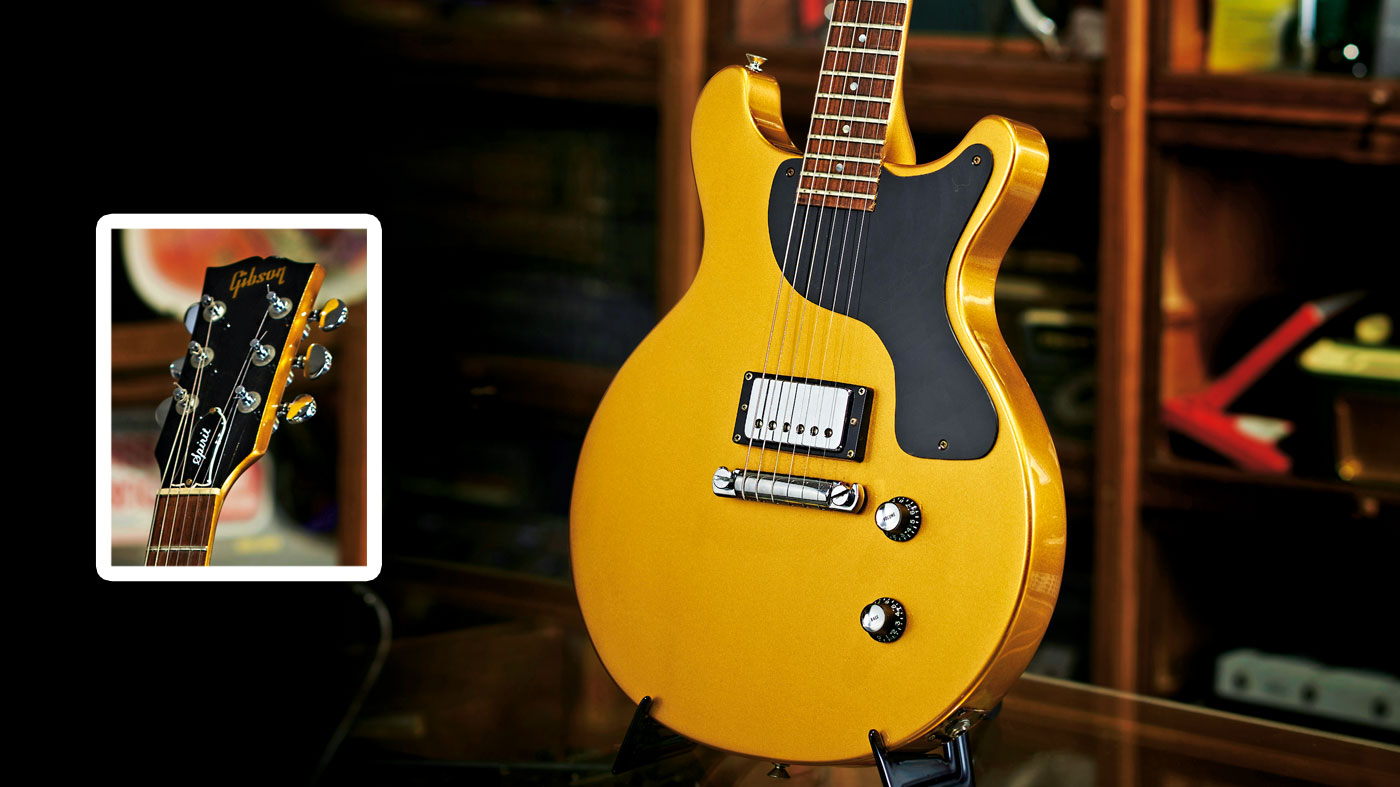
Gibson’s Spirit first appeared in the company’s catalogue in 1982 and was available in two configurations: the single-pickup version pictured here and a double-humbucker edition dubbed Spirit II.
Sporting an asymmetrical double-cutaway, the Spirit shares certain design characteristics with the arguably more illustrious double-cut Les Paul Junior, featuring a carved top, a stop tailpiece, Gibson’s 24.75-inch scale length and an unbound rosewood ’board.
If you can find one today, you'll be rewarded with a solid, no-nonsense playing experience from a classic marque
In tune with the times, the original chrome humbucker was high output, fed through the single tone and volume barrel knobs, with a control cavity accessed via the instrument’s rear.
The combination bridge/tailpiece had independent intonation adjustment for each string and the body furniture was finished off with a celluloid pickguard. If you can find one today, you'll be rewarded with a solid, no-nonsense playing experience from a classic marque.
As you can see from the picture, this particular Spirit has received a few modifications during its lifetime, making it more of a ‘player’s guitar’ than a collector’s piece.
While some might argue the ethics of modding vintage guitars, models like the Spirit - which, for the moment, lie in the hinterland between modern and classic status - are ripe for tasteful tweaks.
The gold refinish on this example is from 100-year-old powder made from copper and brass, as on the early 50s Les Pauls, the bridge/tailpiece has been replaced, the humbucker has been either upgraded or covered, and the scratchplate looks like it’s been substituted, too.
Want all the hottest music and gear news, reviews, deals, features and more, direct to your inbox? Sign up here.
A latter-day Junior with what-is-that appeal? We think so.
Guitar courtesy of Guitars: The Museum, Umeå
Guitarist is the longest established UK guitar magazine, offering gear reviews, artist interviews, techniques lessons and loads more, in print, on tablet and on smartphones
Digital: http://bit.ly/GuitaristiOS
If you love guitars, you'll love Guitarist. Find us in print, on Newsstand for iPad, iPhone and other digital readers


